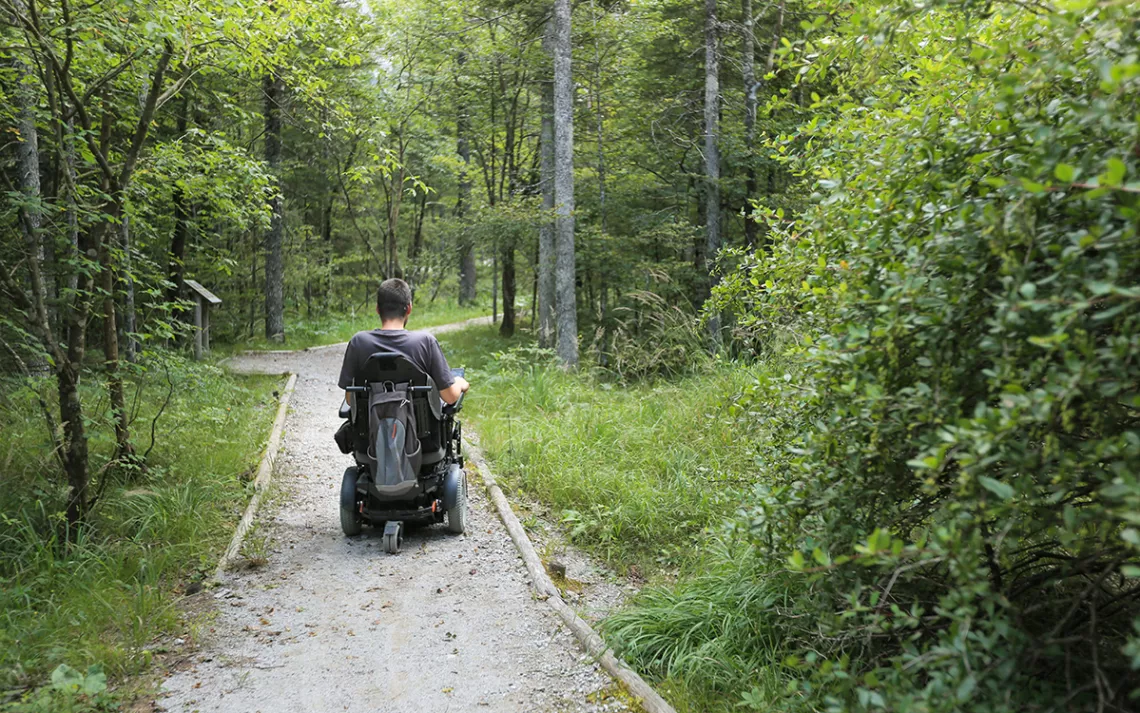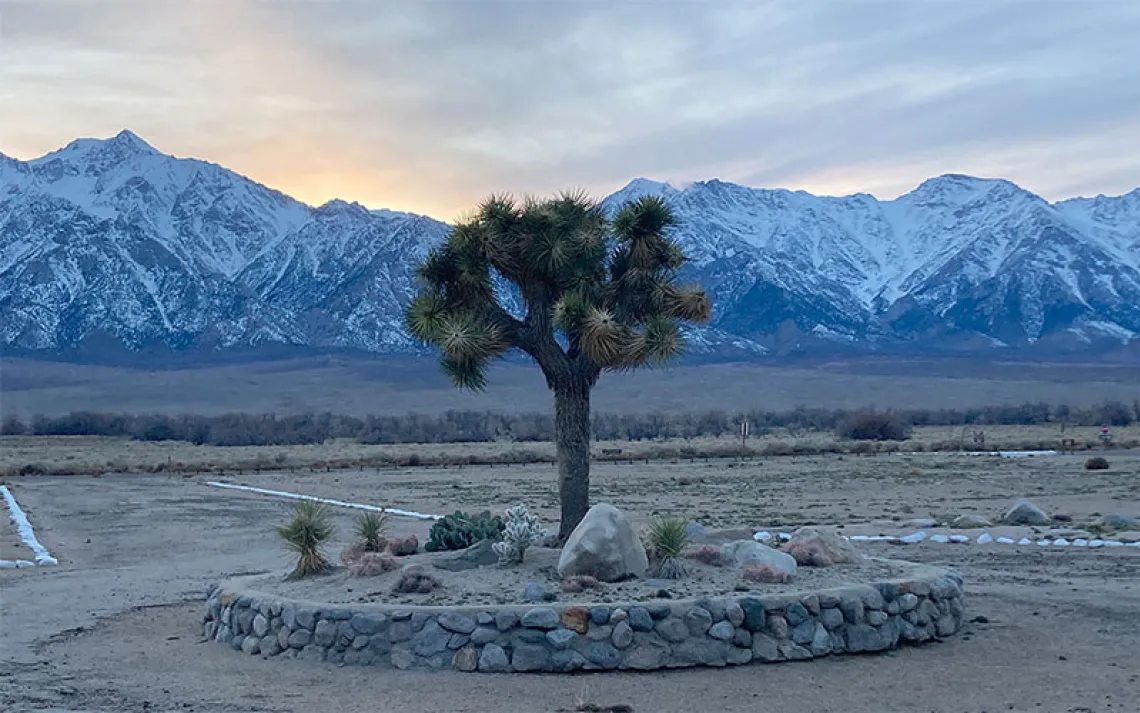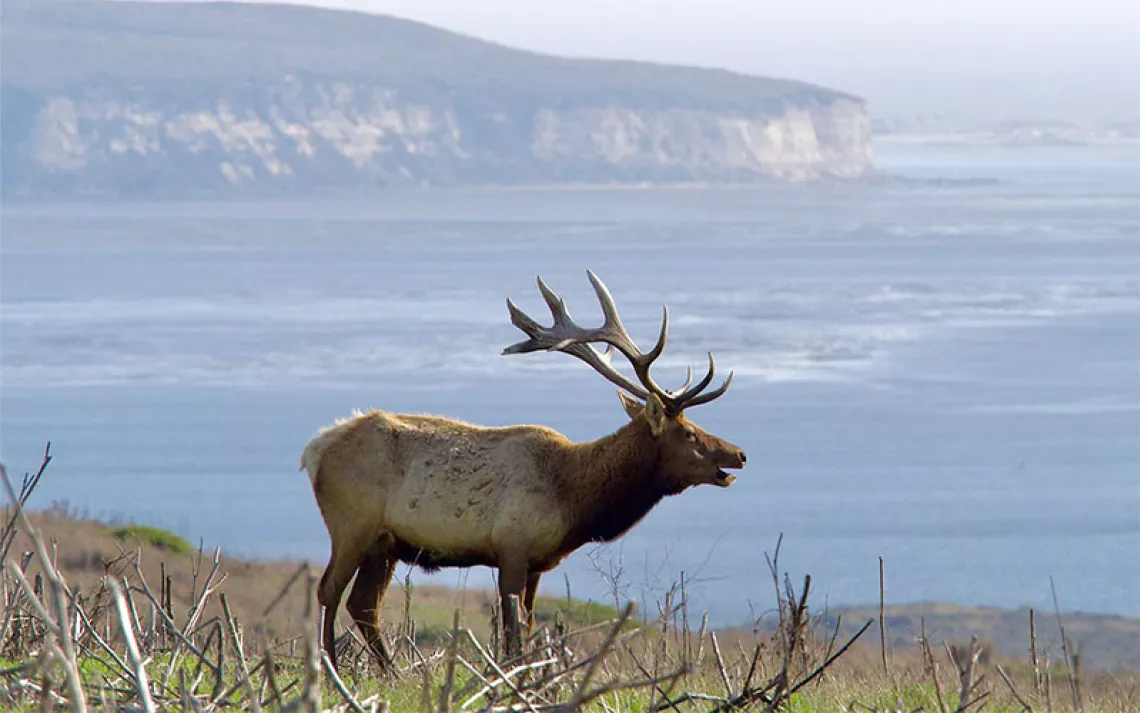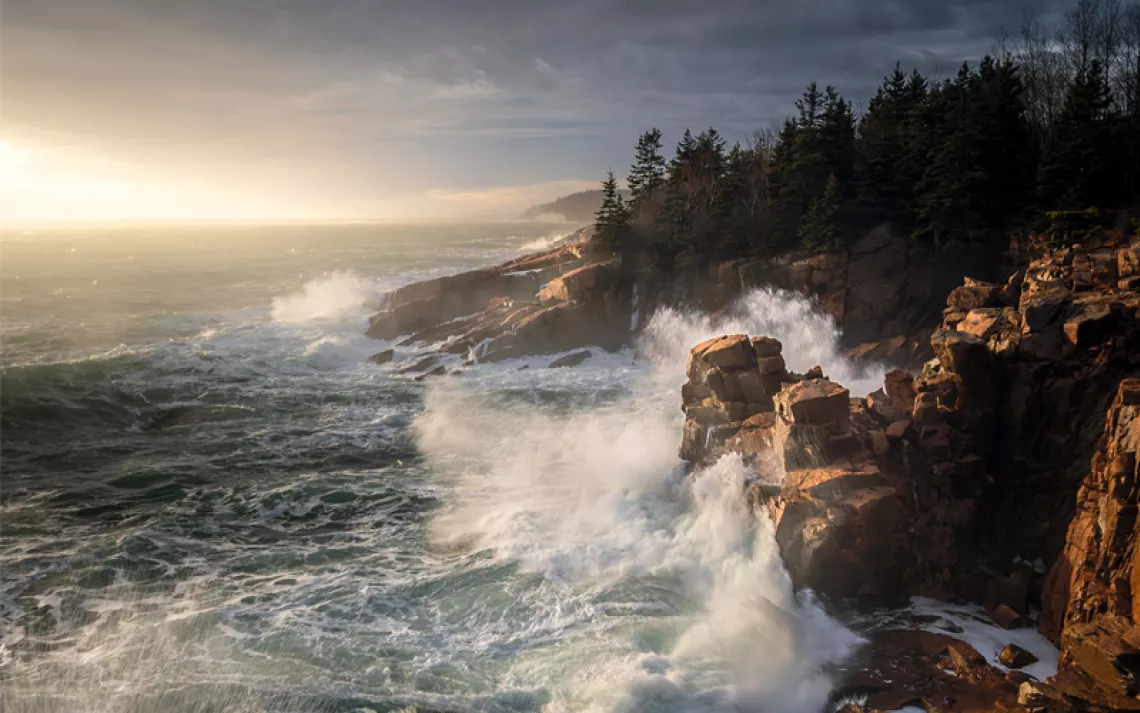People Living With Disabilities Want a Broader Park Experience
Advocates say there’s room for improvement

Photo by 24-K Production/iStock
Alvaro Silberstein of Chile has lived most of his life in a wheelchair—and is still an avid outdoor adventurer. He cofounded the accessible-tourism company Wheel the World, which recently won a Lonely Planet 2020 Best in Travel award in the category of inclusivity. Silberstein has experienced national parks across the globe and supports the United States park system, saying the US offers some of the most accessible parks he’s visited during his world travels. He says some parks are ahead of the curve and can offer lessons.
“Yosemite National Park is itself at the forefront of accessibility. Someone with a disability can have a great experience there and get a sensation of what the park looks like and of the nature onsite,” he says.
For the past five years, the National Park Service has been working to increase accessibility in an effort to accommodate a more diverse range of visitors. The 2015–2020 accessibility plan created by the NPS Accessibility Task Force aims to improve parks nationwide and enhance access for guests with disabilities. This includes better access to restrooms, wider walkways, a higher number of paved trails, more accessible vista points, and additional braille signs for those who are visually impaired. The Park Service has also increased access by removing financial barriers with the lifetime Access Pass specifically for visitors who are medically determined to have a permanent disability. But while parks have made strides in accessibility, activists say there is more work to be done. More trail options, online information for visit planning, and representation of people with disabilities would make national parks even more enjoyable for millions of Americans.
Silberstein’s most common frustration is when parks don't offer enough paths for those in a wheelchair to explore more than a few meters off the trail. Silberstein says this makes him feel like he’s holding back his travel companions from exploring further. “If there’s a limited section of a trail that you can’t travel on, I believe that offering extra assistance or adaptive equipment can bring the experience for people with disabilities and make it comparable to the rest of the population on hikes and into the trails—as opposed to just a restricted area,” Silberstein said.
He’s hiked Machu Picchu in an adaptive wheelchair, and his company utilizes adaptive equipment to make activities such as surfing and hiking possible for those in wheelchairs in dozens of destinations across the world.
As a wheelchair user, many times the "accessible" trail isn’t enough to offer a full experience of the park. “We can better assist with improved signaling on the trails that aren’t the ideal gradient or width for a wheelchair but are still possible to explore,” he says.
Silberstein’s final advice is to provide useful information to those who are planning their trip so they can be prepared for any situation. He says having details about what to expect beforehand helps better plan out the trip.
Steph Meyer is the adventure and recreation program manager at the National Ability Center, which offers a wide range of inclusive programming for those with physical and mental disabilities. Meyer agrees with Silberstein’s call to action for substantial information about what to expect in each park before arrival. Meyer says it’s often these details that are key to reducing the stress and anxiety of travel for those who face mental disabilities.
“Whether it’s a physical disability, or a cognitive or mental health challenge, the more information you can provide somebody, the more confident they’re going to be in that experience to be able to accomplish it,” she says. “For folks who have the mental health barriers, information is helpful for them to understand exactly what they’re getting themselves into so they don’t have to face the anxiety of going out and doing something unknown.”
For Jennifer Smith, mother to seven-year-old Madelyn, who was born with a rare chromosome disorder, good information is crucial for any visit to a park. Mady’s condition negatively impacts her muscle tone, sense of coordination and balance, and vision. Mady is often unaware of her surroundings, which impacts her ability to visit parks safely.
“Traveling has proven to be more difficult as she gets older,” says Smith. “I have a dream of taking her to the Grand Canyon, but I equally have the fear that she will trip and fall to her death.”
Smith says it’s critical for Mady’s safety to know what to expect before arriving, everything from bathroom locations to sidewalk width. Right now, the Smith family can travel with Mady and her younger sister by using their double stroller but must find wide and paved paths to accommodate their equipment. Hikes can’t be too long, and a nearby restroom is a must, as Mady isn’t fully toilet independent.
“One day I hope that these things can be accessible to her,” says Smith. “There are such beautiful places that I’d love for her to see. I just can’t imagine hiking five miles uphill with her on my back or in a stroller.”
While a commitment to accessibility can span the entire park system, each park is different. Perri Meldon has worked with the National Park Service researching disability history in the parks. She thinks that parks would benefit from more localized planning.
“The parks accessibility program works on a nationwide level—there are very few people on the ground, focused specifically on accessibility,” Meldon says.“ In many cases, they’ve created a baseline accessible experience, but unless there’s a vested interest either from staff or from park visitors, expanded features might not be available.”
Meldon says parks could do a better job of representing people with disabilities in their outreach, showing that there is a range of accessible options that anyone can enjoy. She believes there’s enormous value in telling stories of people with disabilities who have successfully visited US national parks that include more than just outdoor spaces—they also encompass national monuments and preserved historic locations.
National parks are places that each person can experience in their own way, and Silberstein says that ultimately the goal of increasing accessibility within US national parks should be aimed at making those with disabilities feel as if they have as much opportunity to explore the parks as anyone else.
“Accessibility has improved a lot,” Silberstein says. “I think that it’s possible to further push those limits and bring experiences into the park that allow people to feel more included.”
 The Magazine of The Sierra Club
The Magazine of The Sierra Club



